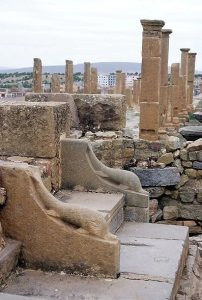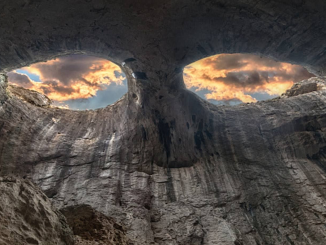Unearthing the Sophistication of Roman Daily Life
Nestled within the ancient ruins of Timgad in Algeria, a remarkable discovery offers an intimate glimpse into the private lives of the Romans. Among the remnants of this once-bustling city lies a uniquely adorned toilet, distinguished by its dolphin-shaped armrests. This artifact not only highlights the Romans’ affinity for opulence but also sheds light on the sophistication embedded in even the most private aspects of their daily routines. This blog post explores the significance of this ancient toilet and what it reveals about Roman culture and engineering.
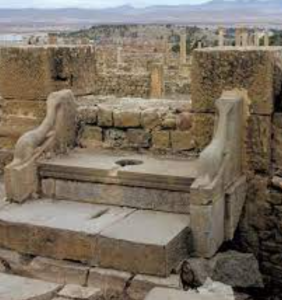
The Elegance of Utility: A Toilet Beyond Its Time
The ancient Roman toilet with dolphin armrests exemplifies the empire’s unparalleled commitment to combining utility with artistry. Constructed from stone, this toilet transcends its basic function, serving as a testament to the Roman appreciation for beauty in all facets of life. The dolphin motifs, symbols of both the aquatic realm and the god Neptune, illustrate the intricate attention to detail and thematic coherence prevalent in Roman design. Images of the toilet reveal the meticulous craftsmanship that went into its creation, offering a tactile connection to the past inhabitants of Timgad.
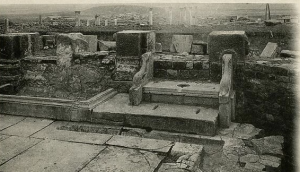
Timgad: A Cradle of Roman Ingenuity
Founded by Emperor Trajan around 100 AD, Timgad was designed as a military colony to safeguard the empire’s African frontiers. Over time, it evolved into a vibrant urban center, epitomizing the architectural and cultural zenith of Roman civilization. The presence of a toilet adorned with dolphin armrests amidst Timgad’s ruins reflects the city’s status as a cradle of innovation and luxury. Through the archaeological layers of Timgad, we uncover a society that celebrated the confluence of functionality and aesthetic appeal, embedding sophistication into the fabric of daily life. The use of dolphin motifs, symbols of both the sea and Dionysian luxury, on the armrests of a toilet showcases the extraordinary lengths to which Roman artisanship extended, marrying functionality with an aesthetic appeal that delighted and comforted its users.
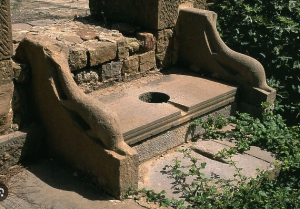
Preserving the Legacy of Roman Engineering
The discovery of the dolphin-armrest toilet in Timgad not only offers insights into the domestic lives of the Romans but also underscores the importance of preserving ancient sites. Each artifact unearthed from Timgad’s soil brings us closer to understanding the complexities of Roman society and the ingenuity that underpinned their way of life. As we marvel at the photographs of this ancient lavatory, we are reminded of the enduring legacy of Roman engineering and the timeless nature of their pursuit of beauty. Preserving these sites allows us to continue exploring the depth of human history and the innovations that shaped the world as we know it today.
In conclusion, the ancient Roman toilet with dolphin armrests found in the ruins of Timgad, Algeria, is more than a curiosity from the past; it is a bridge to understanding the sophisticated lifestyle and aesthetic values of the Roman Empire. As we piece together the fragments of ancient civilizations, discoveries like these illuminate the interconnectedness of art, culture, and daily life, inviting us to reflect on the universality of human creativity and ingenuity.
The dolphin-adorned toilet of Timgad stands as a poignant reminder of the Roman Empire’s grandeur, its innovative spirit, and its enduring influence on subsequent generations. This ancient lavatory, with its artistic armrests, invites us to marvel at the ingenuity of Roman engineering and the elegance that characterized even the most private aspects of Roman life. As we explore the ruins of Timgad and other ancient sites, we are continually reminded of the ancient Romans’ ability to infuse artistry into everyday life, leaving a legacy that transcends time. In uncovering and studying such remarkable artifacts, we not only pay homage to the past but also carry forward the timeless lesson that beauty and functionality can coexist harmoniously, enriching our lives in profound ways.
